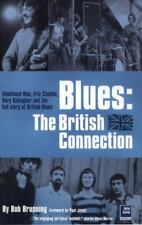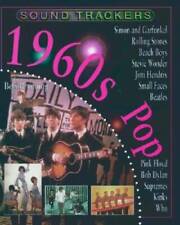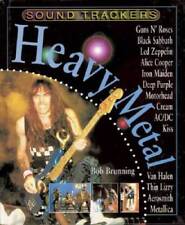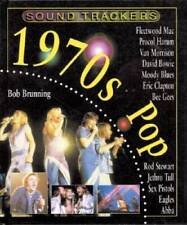|
Music City Blues Bluesletter Music City Blues Bluesletter, December 1997 Rick Vito
By D. Kunkel When people talk about Rick Vito, their first recollections are often the stint he did with Fleetwood Mac from 1987 to 1991. And looking from today back at Fleetwood Mac, most people probably think of them as a pop or rock band. But that's not the view Vito has. He remembers them as "a blues band. When I was very young, I went to see the group - the first group, with Peter Green - during that period of Cream and Jimi Hendrix and all that psychedelic stuff. There was just so much going on at that time, in the mid to late 60's. And I went to see this group. Peter Green is just one of those indelible impressions that will always be with me." "For my money, Peter Green could have been with anybody. He was so strong as an artist. The band was good too, I'm not taking anything away from them. But Peter Green was a guy who just could sing that kind of music really well, wrote cool songs, and was an extremely good guitar player. I don't think most people realize how good he was. I think you had to see him live. He was really a master of dynamics & tone. He was always working his tone switches, and volumes. He was just really dynamic. So that will always be my impression of Fleetwood Mac. The group that hit in the mid 70's was just another pop phenomenon. I wasn't influenced by it in the slightest. When I was asked to join, I said to Mick, if I can bring back more that original side of it. My music is more like Peter Green." Other keys to Vito's roots include seeing Magic Sam the same year he first saw Fleetwood Mac. "And I have to say Jimi Hendrix at that early stage, before he started to lose his direction, say the first or second record." He also spent time with many of the California-based blues players, such as Albert Collins, Big Joe Turner, Lowell Fulson, George "Harmonica" Smith. He was part of a band that played at The Topanga Corral and backed them up. "Albert was always our favorite. And he really liked us. We'd do concerts around the L.A. area. John "Juke" Logan and I interviewed Albert once for an instructional cassette. Se we went to his house, and tried to get him to talk about his style and how it originated, and to give examples." "My direction has always been towards blues. It's always been the root of what I do. Even when I was hired by somebody to play, that part of my style translates. I've been able to use that as a base, to incorporate some of that blues roots into whatever I was working with. Ultimately what I hope to do is be recognized as someone who pays homage to those blues roots and creates some thing interesting with them." "I don't ever stray too far from my roots. I like to preserve that as much as possible. I've spent a lot of time experimenting with different kinds of music, I tried to be a rock and roll guy exclusively for a while, and it didn't work for me. I tried playing more R&B kind of soul influenced music. That didn't really work. Some of it did, but I just feel like what I'm doing now is me - take it or leave it, like it or hate it. I'm not trying to be something I'm not." Vito is currently reworking his Bluestown recording. Since completing it about a year ago, he's recorded some additional things which "I like a lot, so we devised a plan to dissect this record, and take some things off of it that either aren't holding up at this point, or I could use in a second record. Then I could insert these new things that I've cut with my band that I play with here locally. So that's what we've done, and I've got a new record and a new manager in Los Angeles. And he's now starting to shop this product. It won't be called Bluestown. It'll look a little different. But it'll basically be most of this record with some great new stuff." Bluestown included all original material, with two exceptions - Otis Rush's "Homework" and Peter Green's "I Loved Another Woman." Both were songs that the early Fleetwood Mac did. While he prefers doing his own material, "a good song's a good song. If I heard something I thought was right for me, I'd do it. I think songs are so important. The song is the thing. It's something you have to strive for as an artist, better and better material, to make it more interesting. It doesn't have to be intricate. It can be simple, but it has to connect. It has to connect with your style and your voice. Simplicity makes for a good song. I like real simplicity, a catch phrase that sticks with you. Something that's not contrived. It has to be honest and create that successful marriage of voice, instrumentation, and lyric." Vito and his band currently hold "Rick Vito's Rockin' Blues Party" on Wednesdays at the Ace of Clubs. "I've tried a lot of different venues, and the Ace of Clubs is the one that seems to be working best for me right now. We've got Lightning 100 advertising the Rockin' blues Party, and we've been able to have some really good roots oriented special guests. We back them up for 4 or 5 songs. We've had Shaun Murphy, Bekka Bramlett, Billy Burnette, and have Big Mike Griffin coming. It's been really fun. I want to create a happening where people know there's going to be somebody good every week, and know there's a great band playing. Reese Wynans has just joined as our regular keyboard player." Vito's discography is both lengthy and diverse, including work with John Mayall, John Prine, Roger McGuinn, Bob Seger, Jackson Browne, Roy Orbison, and Jesse Colin Young. He recently did some work with Tom Waits. Vito likes the "Picasso-esque quality" of Waits' music, and would like to do some more of that. He's on an upcoming Rita Coolidge recording, and has contributed a song to Maria Muldaur's next project. "And I'd like to do some rockabilly. That's just blues music countrified a little bit. I'd like to do a record sometime with Billy Burnette. He's got a pretty good rockabilly feel. When we play together we have a real good chemistry. It takes a walk on the wild side, and I like that. And I'd like to produce more people now. I'd like to produce some up and coming acts. Some younger people picking up on the roots thing. What's missing in rock music today for me is that they didn't go back far enough to find their roots." He has always found the variety of the musicians he's worked with stimulating. "I am the guy who can change musical colors, be a chameleon. That's been fun for me to wear different hats. That doesn't mean I was ever losing sight of what I was really about - that basic 3 chord music. That's what I'm about." "There's an audience for anything, you just have to find it. That's your quest as an artist, you have to make your own thing so obvious that a group of people are going to pick up on it. That's the challenge." Thanks to Rick Vito for sending this to the Penguin, Les for posting it to the Ledge, and to Anusha for formatting and sending it to us.
|








